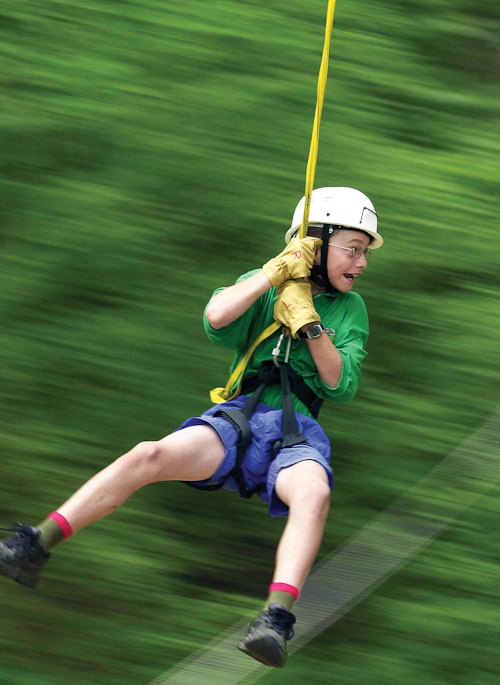
John Gillespie, 13, from Troop 832 in Utah, flies down the zip line at Action Alley in Action Center C Thursday, July 26, 2001. (Photo by Mark A. Duncan)
Blur motion is a technique used to imply motion in a still photograph and this one is outstanding. It takes some practice but digital cameras make instant review of your attempts possible. In this case John is swinging from one side to the other of the frame. Mark Duncan choose a slow shutter speed relative to speed of the action and panned his camera with John's direction of swing. The shutter in this case was 1/60 second. The swing speed was very fast.
Notice how sharp John's face is and the background is completely blurred. So how is it that John's head is sharp? Remember the camera is moving with John as he swings and the photographer is trying to keep John in the same position in the frame. So if the swing of the camera matches the swing of the action, the object in motion (John) does NOT move relative to the camera's sensor. Meanwhile the stationary objects, such as the trees in the background, are moving with respect to the camera's sensor. The result–blur.
This is fine example from an experienced photographer. Don't expect your first techniques to be this good. But you can achieve good blur motion with practice.
Experiment with shutter speeds. Try 1/30 second. Remember the speed that will work for you is relative to the speed of the object. You might have to use 1/250 second for a blur picture of an Indy race car.
